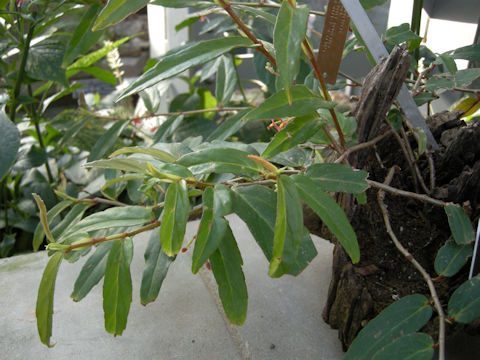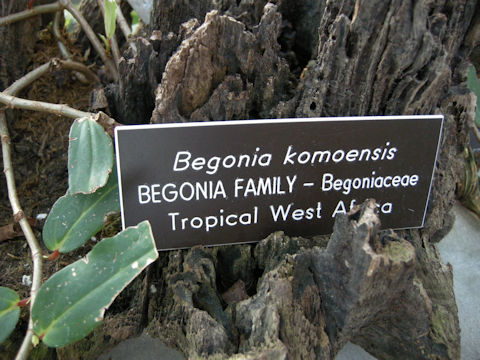 |




|

|
熱帯アフリカ西部の赤道ギニアおよびガボンが原産です。着生植物で、腐った幹の地面に近いところに生えます。茎は長さ2メートル以上になり、四方に広がったり、這ったり、よじ登ったりします。葉は、地元では採集して、野菜として利用されます。1921年、エドガー・アームシャー(Edgar Irmscher)によって記載されました。
|

|
シュウカイドウ科シュウカイドウ属の常緑多年草で、学名は Begonia komoensis。英名はありません。
|

|
The Begonia komoensis belongs to Begoniaceae (the Begonia family). It is an evergreen herb that is native to the west tropical Africa; Equatorial Guinea and Gabon. This is an epiphytic plant and grows near the ground on decaying trunks. The stems are up to 2 m long that can be sprawling, trailing or climbing. The leaves are harvested from the wild for local use as a vegetable. It was described in 1921 by Edgar Irmscher.
|

|
アメリカ・ワシントンDC「アメリカ国立植物園」にて、2010年02月18日撮影。(photo by Jon Suehiro)
|

